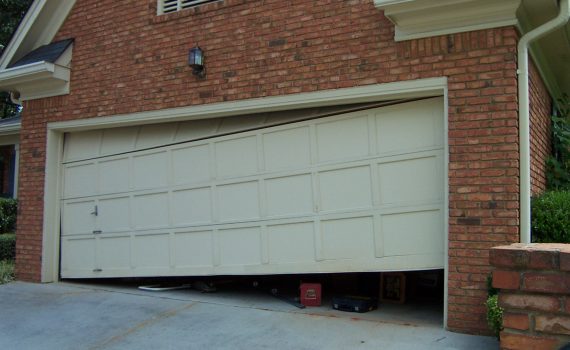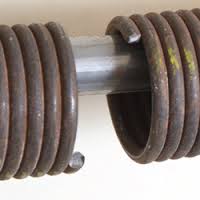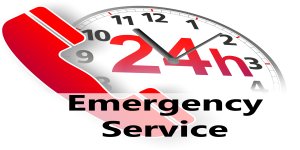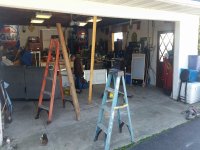
Garage Door Safety Features: Examples and How to Maintain Them
Garage doors are important in a home with a dedicated space for cars, but they also pose a serious risk to our safety. Every year, countless accidents occur due to malfunctioning garage door openers, broken springs, and human error. To mitigate these risks, it is essential to understand and utilize garage door safety features that can prevent accidents. From minor injuries to even fatalities, these accidents can be devastating.
To avoid or reduce these occurrences, garage door safety features can be installed, and we’ll take a closer look at some of the options you have available. We’ll delve into how each feature works to prevent accidents and discuss their benefits. By the end of this article, you’ll be equipped with the knowledge to make an informed decision about which safety features to install in your garage door to keep yourself and your loved ones safe. Let’s get started!
1. Automatic Reversal Mechanism
Imagine your garage door is closing, and suddenly you notice a ball or a bike in the way. What would happen if the door came down and collided with it? Scary, right? Well, that’s where garage door safety features, like the automatic reversal mechanism, step in to avert destruction.
This safety feature is a lifesaver, literally! It’s designed to detect if something is blocking the garage door’s path, and if it does, the door will automatically reverse and open up again. There are two types of automatic reversal mechanisms you’ll find in the market:
- mechanical; and
- photoelectric
I. Mechanical Reversal Mechanism
The mechanical version uses pressure sensors to detect an obstacle. As part of modern garage door safety features, these pressure-sensitive sensors detect any resistance in the door’s path when the garage door is closing. If an obstruction, such as a person or object, is present, the sensors send a signal to the garage door opener, telling it to stop and reverse the door’s direction.
It’s important to note that while pressure-sensitive mechanical reversal mechanisms can be effective, they can also be less reliable than modern photoelectric sensors. That’s why many newer garage door openers use photoelectric sensors to detect obstructions and prevent accidents.
II. Photoelectric Reversal Mechanism
This version works by using two sensors located on either side of the door’s path. These sensors are part of the garage door safety features that ensure the door operates securely. When the garage door is closing, the sensors send an invisible beam across the doorway. If an object interrupts this beam, it triggers the sensors to send a signal to the garage door opener, telling it to stop and reverse the door’s direction.
To ensure the mechanism is functioning properly, it’s a good idea to test it regularly. You can do this by placing an object, like a roll of paper towels, in the path of the garage door while it’s closing. If the door doesn’t reverse, you should have the mechanism inspected by a professional.
2. Emergency Release Mechanism
Have you ever been stuck in your garage during a power outage, wondering how to get out? It’s a scary thought, but engineers have considered that. The emergency release mechanism is a solution.
This mechanism is a safety feature that allows you to manually open the garage door from the inside during an emergency. It’s basically a red cord that hangs down from the opener. All you need to do is pull the cord, and voila! The motor is disengaged, and you can manually open the garage door.
However, it’s important to remember that the emergency release mechanism should only be used in emergencies. Overusing it can cause damage to the door or the opener’s motor, so use it sparingly.
To that end, keep the emergency release mechanism out of reach of children. As we all know, children are curious creatures, and they may see it as a toy and accidentally pull the cord, causing the door to close or open unexpectedly.
Testing the emergency release mechanism is a piece of cake. All you need to do is pull the cord and see if the door opens smoothly. If it doesn’t, you should have it inspected by a professional.
3. Garage door cables
Extension springs are constantly under high tension and can be dangerous if they break and fly off. That’s where safety cables come in as a backup to prevent this from happening.
The safety cables are attached to the end of the extension spring bracket and run through the center of the spring, connecting to the wall or ceiling of the garage. If the extension spring breaks, the safety cables will keep it in place and prevent it from flying off uncontrollably, minimizing the risk of injury or damage.
It’s important to have safety cables installed by a professional garage door technician to ensure proper installation and avoid potential accidents. Periodic inspections and maintenance of the garage door safety features, including the safety cables, can also ensure they’re functioning correctly and providing an extra layer of protection against accidents and injuries.
4. Rolling Code Technology
If you’ve ever worried about someone hacking into your remote access, you’ll be happy to know that rolling code technology makes it much harder for hackers to do so.
Unlike fixed codes, which are used by older garage door openers, rolling code technology generates a unique code every time you use the remote control. This means that even if someone manages to intercept the code, they won’t be able to use it to gain access to your garage.
Another benefit of rolling code technology is that you can program multiple remotes to work with your garage door opener. This means that you and your family members can each have your own remote, and you don’t have to worry about sharing or losing a single remote.
However, it’s important to note that rolling code technology is not infallible. If someone gains physical access to your remote control, they can still gain access to your garage. That’s why it’s important to keep your remote control in a safe and secure location, and not to share it with anyone you don’t trust.
Maintenance and Testing
To keep your garage door opener in tip-top shape, inspect it regularly for any signs of wear and tear. Pay special attention to garage door safety features during your inspection, as these are crucial for preventing accidents. You don’t want to ignore those pesky frayed wires or loose bolts, as they can quickly become bigger problems down the line. Don’t forget to keep the tracks and rollers clean, too – it’s an easy way to prevent any issues and ensure smooth operation.
But it’s not just about inspecting your garage door opener – it’s also crucial to test your safety features regularly. By doing so, you can ensure that they’re working as intended and providing the safety and protection you need.
Looking for Professional Garage Services in Berlin, NJ?
As we’ve seen, having proper garage door safety features is crucial for home security. These features, such as automatic reversal mechanisms, photoelectric sensors, emergency release mechanisms, and rolling code technology, are designed to keep your home and belongings safe from intruders and accidents.
If you would like to install any of these features or have any need for professional garage door services in Berlin, NJ, we are the ones you want to speak to. We are Dave Moseley The Door Guy.
We offer garage door installation, garage door repair, and garage door replacement services in Berlin, Nj, and we offer them at the levels of excellence and professionalism that you deserve as the client. At Dave Moseley, we prioritize your safety and security above all else and we’re dedicated to providing you with the best possible services and solutions. Contact us today to book our services and make your home as safe and secure as can be.
Frequently Asked Questions
Why are garage door safety features important?
Garage door safety features are essential because they help prevent injuries and accidents. Malfunctioning garage doors, if not equipped with proper safety mechanisms, can cause harm. Features like automatic reversal and safety cables reduce the risk of damage, while technologies like rolling codes ensure secure access to your garage.
How does the automatic reversal mechanism in garage door safety features work?
The automatic reversal mechanism is one of the most crucial garage door safety features. It uses either mechanical or photoelectric sensors to detect an obstruction in the door’s path. If something is in the way, the door automatically reverses, preventing any damage or injury. Regular testing is essential to ensure it works properly.
What is the emergency release mechanism in garage door safety features?
The emergency release mechanism is another key garage door safety feature. In case of power failure or an emergency, you can manually disengage the motor by pulling a red cord. This allows you to open the garage door manually for safe exit. It’s important to test this feature regularly to ensure it functions smoothly.
How do safety cables contribute to garage door safety features?
Safety cables are an important part of garage door safety features, particularly for extension springs under high tension. If a spring breaks, the safety cables prevent the spring from flying off uncontrollably, minimizing the risk of injury or damage. Proper installation and periodic maintenance are vital for optimal performance.
What is rolling code technology in garage door safety features?
Rolling code technology is a modern safety feature that makes it harder for hackers to intercept your garage door opener’s signal. Every time the remote is used, a new unique code is generated, ensuring better security for your home. It’s a great addition to any garage door system, but remember to keep your remote secure.
How can I maintain garage door safety features?
To keep garage door safety features working effectively, regular maintenance is essential. This includes inspecting the tracks, rollers, cables, and sensors for wear and tear, cleaning the tracks, and testing features like the automatic reversal system and emergency release mechanism. For the best results, consider professional inspections.





